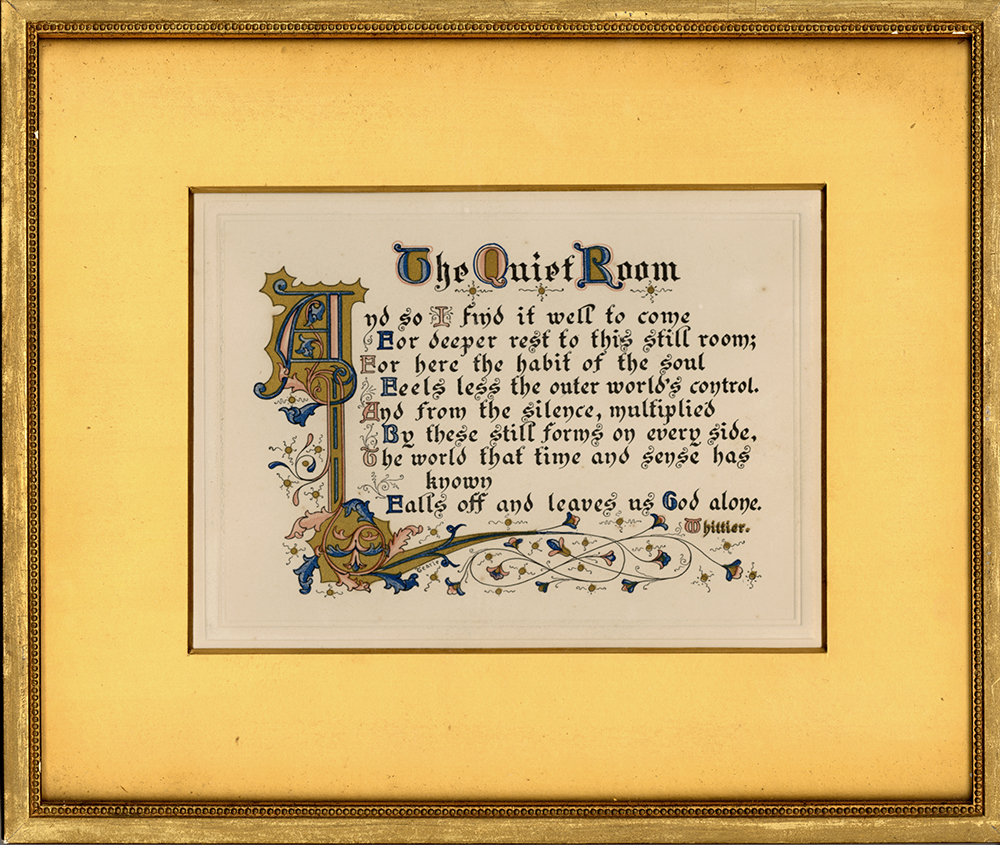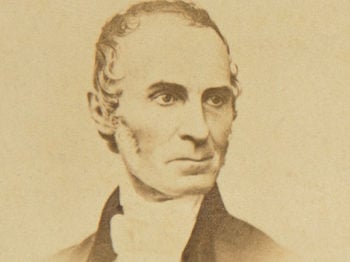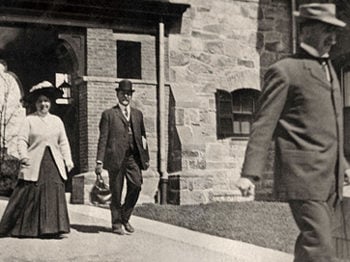
Longyear Museum has been fortunate over the years to receive donations of historical objects relating to Mary Baker Eddy and the Christian Science movement. Along with mystery and intrigue, these items often bring fresh stories to the surface. This was certainly the case with the Museum’s recent acquisition of a framed card1 containing an illuminated stanza from a poem written by John Greenleaf Whittier. Mrs. Eddy gave copies of this card to her household workers sometime between 1906 and 1910. Entitled “The Quiet Room,” the piece reads:
And so I find it well to come
For deeper rest to this still room;
For here the habit of the soul
Feels less the outer world’s control.
And from the silence, multiplied
By these still forms on every side,
The world that time and sense has known
Falls off and leaves us God alone.2
This card was originally given by Mrs. Eddy to Minnie Scott with this inscription on the back: “My dear Mrs Scott Please accept this[.] MB Eddy.”3 Mrs. Scott, a diligent early worker, served in Mrs. Eddy’s household for more than three years, primarily as a cook. Her gratitude for the opportunities to serve Mrs. Eddy shine through the anecdotes and insights in her reminiscences.4

!["My dear Mrs Scott Please accept this[.] M B Eddy"](https://www.longyear.org/wp-content/uploads/2014/01/The-Quiet-Room-back-1-Whittier-MBE-1000x.jpg)



